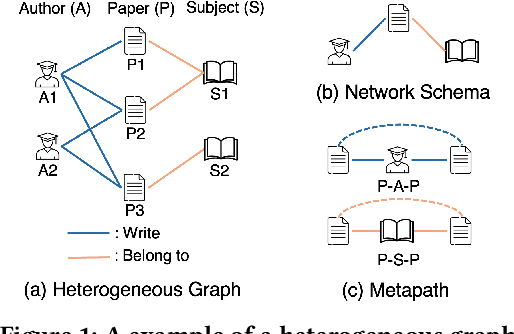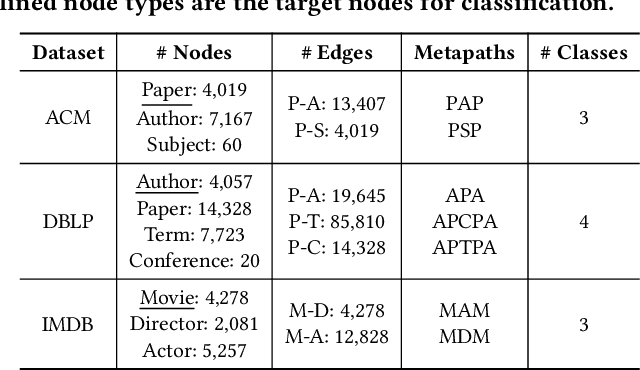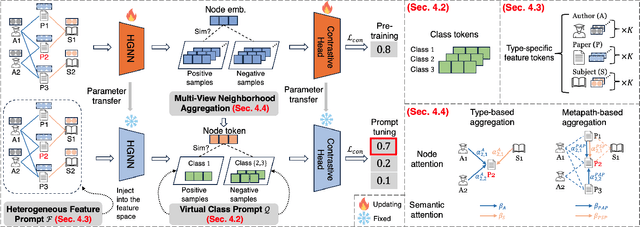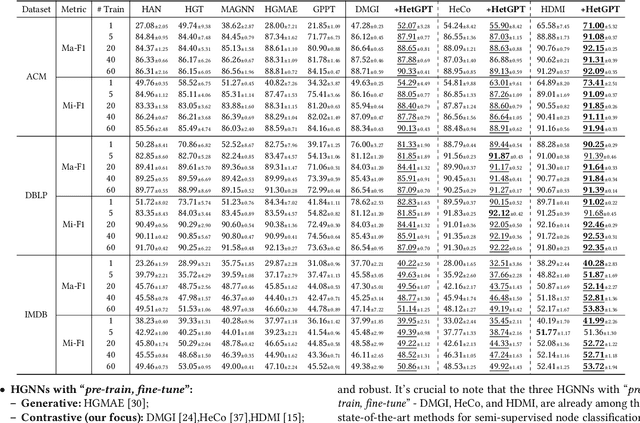HetGPT: Harnessing the Power of Prompt Tuning in Pre-Trained Heterogeneous Graph Neural Networks
Paper and Code
Oct 23, 2023



Graphs have emerged as a natural choice to represent and analyze the intricate patterns and rich information of the Web, enabling applications such as online page classification and social recommendation. The prevailing "pre-train, fine-tune" paradigm has been widely adopted in graph machine learning tasks, particularly in scenarios with limited labeled nodes. However, this approach often exhibits a misalignment between the training objectives of pretext tasks and those of downstream tasks. This gap can result in the "negative transfer" problem, wherein the knowledge gained from pre-training adversely affects performance in the downstream tasks. The surge in prompt-based learning within Natural Language Processing (NLP) suggests the potential of adapting a "pre-train, prompt" paradigm to graphs as an alternative. However, existing graph prompting techniques are tailored to homogeneous graphs, neglecting the inherent heterogeneity of Web graphs. To bridge this gap, we propose HetGPT, a general post-training prompting framework to improve the predictive performance of pre-trained heterogeneous graph neural networks (HGNNs). The key is the design of a novel prompting function that integrates a virtual class prompt and a heterogeneous feature prompt, with the aim to reformulate downstream tasks to mirror pretext tasks. Moreover, HetGPT introduces a multi-view neighborhood aggregation mechanism, capturing the complex neighborhood structure in heterogeneous graphs. Extensive experiments on three benchmark datasets demonstrate HetGPT's capability to enhance the performance of state-of-the-art HGNNs on semi-supervised node classification.
 Add to Chrome
Add to Chrome Add to Firefox
Add to Firefox Add to Edge
Add to Edge